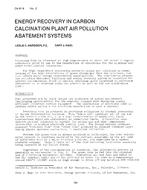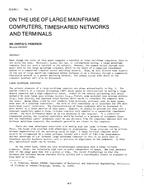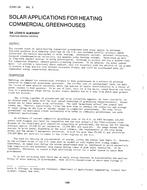-
-
Available Formats
- Options
- Availability
- Priced From ( in USD )
-
Available Formats
-
- Immediate download
- $16.00
- Add to Cart
Customers Who Bought This Also Bought
-

CH-81-08-2 -- Energy Recovery in Carbon Calcination Plant...
Priced From $16.00 -

CH-81-01-3 -- On the Use of Large Mainframe Computers, Ti...
Priced From $16.00 -

CH-81-17-1 -- Air Flow Pattern and Its Influence on the E...
Priced From $16.00 -

CH-81-24-3 -- Solar Applications for Heating Commercial G...
Priced From $16.00
About This Item
Full Description
In fiscal year 1974/75 the central utilities plant at the University of California, San Diego (UCSD), consumed 171,360 million kcal (6.8 million therms) of boiler fuel. In 1979/80, the first full year of operation following installation of Dead Band Control Strategy (DBCS), the central utilities plant consumed 88,200 million kcal (3.5 million therms) of boiler fuel. The retrofit process began in 1976 and progressed one building at a time to final completion in February 1979. Funds were made available through the University of California Capital Improvement program for a total cost of $600,000. The cost avoidance this year is estimated at $1,520,000.
UCSD is the fourth largest campus of the University of California nine-campus complex, and is geographically separated into 3 parts : the main campus, Scripps Institution of Oceanography, and the Medical Center. This paper concerns only the main campus portion of UCSD. The main campus, built on the grounds of a World War II Marine Corps Facility known as Camp Matthews, is located about 1 mile from the Pacific Ocean and 12 miles north of downtown San Diego. The central utilities plant and 12 major buildings totaling 204,387 square meters (2,200,000 square feet) have been constructed on this site during the past 15 years.
Because UCSD is a major science and medical research institution, most buildings have sophisticated HVAC systems. There are more than 40 HVAC systems ranging in size from 5 to 150 fan hp (3.7 to 112 kW) and a total 9,000 tons of refrigeration (31,634 kW). Most buildings are arranged with pneumatic controls while some have electronic controls.






